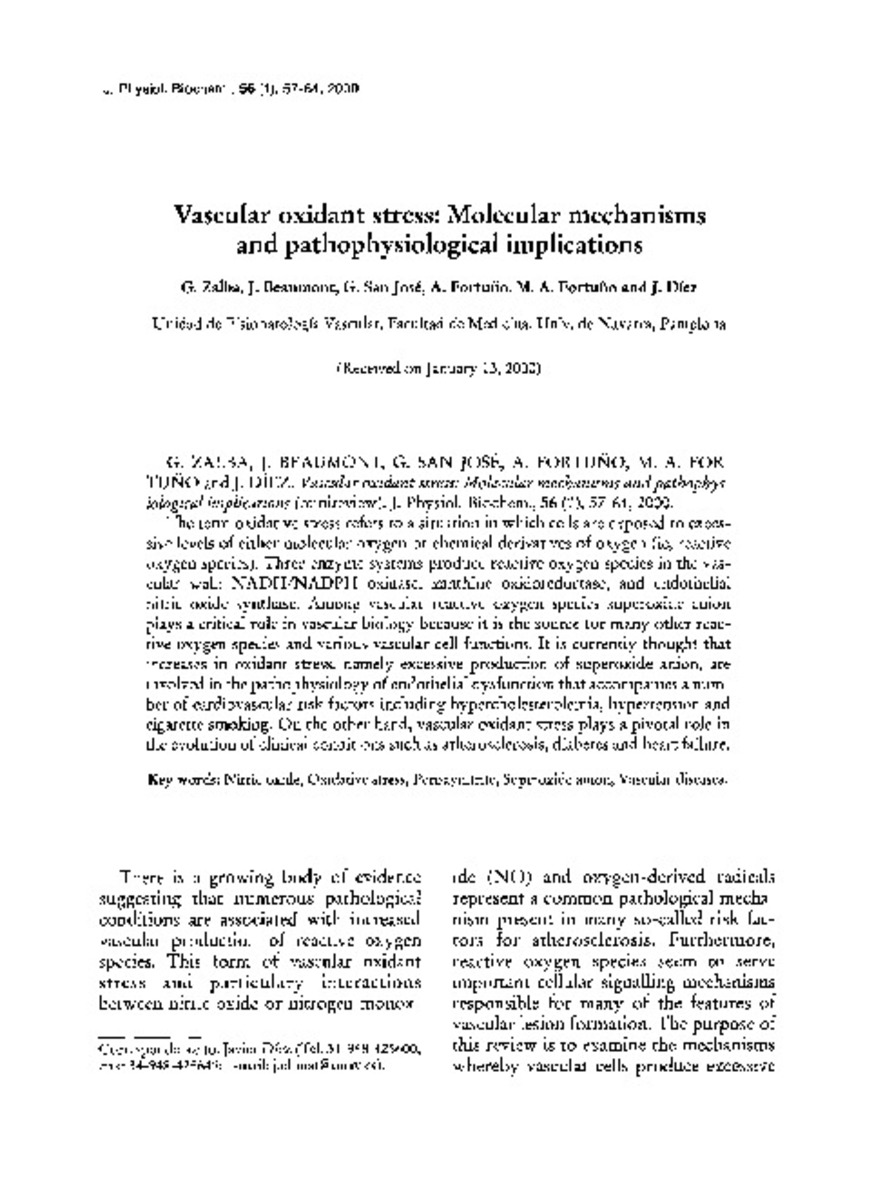Vascular oxidant stress: molecular mechanisms and pathophysiological implications
Palabras clave :
Nitric oxide
Oxidative stress
Peroxynitrite
Superoxide anion
Vascular diseases
Fecha de publicación :
2000
Editorial :
Springer Verlag
Cita:
Zalba G, Beaumont J, San Jose G, Fortuño A, Fortuño MA, Diez J. Vascular oxidant stress: molecular mechanisms and pathophysiological implications. J Physiol Biochem 2000 Mar;56(1):57-64.
Aparece en las colecciones:
Estadísticas e impacto
0 citas en

Los ítems de Dadun están protegidos por copyright, con todos los derechos reservados, a menos que se indique lo contrario.










